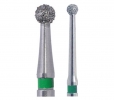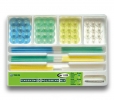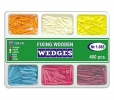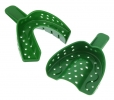This study sought to evaluate the sealing capability of the implant abutment connection of different dental implant systems.
Five Nobel Replace select, Straumann and Intra-lock implants of approximately 4·5 mm diameter with their respective abutments were provided by the manufacturers. A calibration curve was determined by placing toluidine blue (TB) increments of 0·1 μL into 1·5 mL of distilled water and recording its absorbance in a spectrophotometer until reaching 0·7 μL. Then, 0·7 μL of TB was placed in the deepest portion of each implant’s internal screw, the abutments were adapted to the implant according to the manufacturer’s instructions and the specimens were placed in vials with 1·5 mL of distilled water. Spectrophotometric analysis was performed at 1, 3, 6, 24, 48, 72, 96 and 144 h. Statistical analysis was performed by One-way anova at 95% level of significance. The calibration curve was linear with respect to the TB amount in 1·5 μL distilled water (R2 = 0·9961).
All implant abutment systems presented an increase in absorbance as a function of time. As time elapsed in vitro, significantly higher amounts of TB was released from the Straumann and Nobel Replace Select connection systems (P < 0·0001). Leakage was significant between the groups. Despite controlled torquing, the seal between the implant body and the abutment could not be maintained in all three of the systems tested.
PMID: 18976264 PubMed - indexed for MEDLINE





